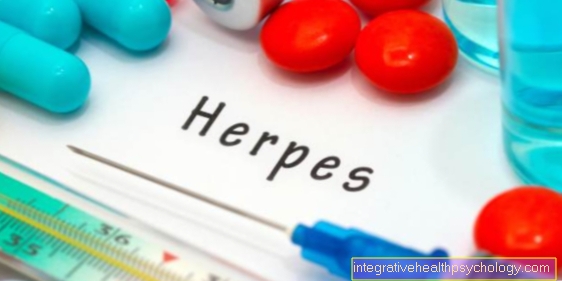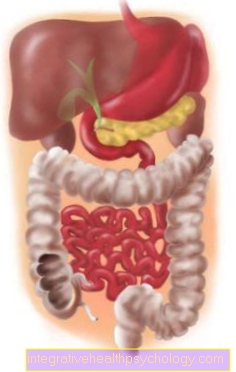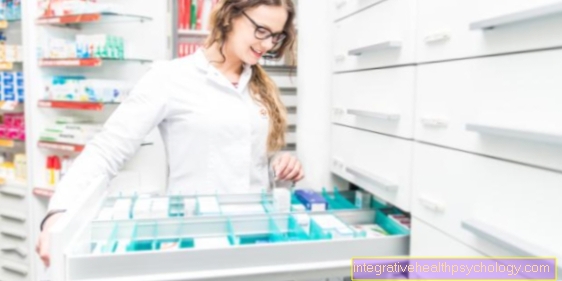SGLT 2 inhibitors
What are SGLT2 inhibitors?
SGLT2 inhibitors, also called gliflozins, are drugs from the group of oral antidiabetic agents. So they are used to control the blood sugar level in diabetes mellitus. SGLT2 stands for a sugar transporter in the kidney. The transporter takes the sugar back into the bloodstream and the inhibition ensures more sugar is excreted in the urine.
SGLT2 inhibitors are drugs that are completely independent of insulin. These drugs can also trigger hypoglycaemia as a side effect and have further side effects locally.

Indications for SGLT2 inhibitors
The main indication for SGLT2 inhibitors is type 2 diabetes mellitus. These people have too much sugar in their blood because their cells have become resistant to the body's own insulin. Since this sugar damages the blood vessels and can lead to kidney disease, heart disease, eye disease and nerve damage, this sugar level must be lowered. This is often achieved with a mixture of different active substances, including SGLT2 inhibitors.
Unlike other oral anti-diabetic drugs, SGLT2 inhibitors can also reduce body weight because the sugar that is flushed out means that the body has fewer calories available. By reducing body weight, diabetes can even be reduced in some sufferers.
In some cases, SGLT2 inhibitors are also used in type 1 diabetes mellitus. Here, however, these must be combined with insulin, otherwise the body cells will not receive enough sugar. Only the excess sugar is also flushed out of the body. SGLT2 inhibitors are only approved for adult patients as there are no study data on their use in children and adolescents.
Find out all about the topic here: Medicines for diabetes mellitus.
The active ingredient in SGLT2 inhibitors
SGLT2 inhibitors go by many different names. The active ingredient canagliflozin has the trade name Invokana®, dapagliflozin is available under the name Forxiga®. Empagliflozin is called Jardiance® and Ertugliflozin is called Steglatro®. Ipragliflozin under the name Suglat® and Tofogliflozin under the name Apleway® or Deberza® are also approved. There are also other active ingredients in development.
All of these active ingredients selectively inhibit, which means that they only have this mechanism in certain channels, the sodium-glucose transporter SGLT2. Normally, this transporter is responsible for the reabsorption of glucose from the urine into the bloodstream. When inhibited, more sugar is excreted in the urine. This happens completely independently of the insulin level in the blood, which distinguishes SGLT2 inhibitors from other oral antidiabetic agents. So the blood sugar level drops because the sugar is excreted from the body and not brought into the cells as with other drugs. This also causes the body to lose calories directly and ingestion can lower body weight. This is also the reason why this drug is the only oral anti-diabetic drug that can also be used for type 1 diabetes mellitus.
The side effects of SGLT2 inhibitors
The most common side effect is severe hypoglycaemia, which occurs particularly often when insulin or other anti-diabetic drugs are also used. This affects more than 10 percent of all users and is one of the very common side effects. Frequently, i.e. in one to ten percent of those affected, infections in the genital area and urinary tract infections appear, since the increased sugar content in the urine is a nutrient for pathogens. Dizziness and rash, as well as frequent urination and back pain are also common side effects.
Around one percent of those who take it have frequent nocturnal urges to urinate, itching in the genital area, kidney dysfunction, fungal infections, volume deficiency with low blood pressure, thirst and constipation. In rare cases, diabetic ketoacidosis has been reported. This is an acidification of the blood through the depletion of certain energy reserves in the body. The incidence of necrotizing fasciitis of the perineum is not known. This is a bacterial infection in the groin area that is often fatal.
Side effects are only statistical possibilities and do not mean that everyone who takes SGLT2 inhibitors will develop them. In the event of side effects, alternatives should be discussed with the attending physician.
Hypoglycemia - What Should You Do? Find out more here.
The kidney failure
SGLT2 inhibitors have a direct influence on the very complex transporter system of the kidneys and can therefore also trigger side effects there. The use of SGLT-2 inhibitors can cause kidney dysfunction in some people. Initially, these are only noticeable in the laboratory, as the creatinine level increases. In rare cases, the intake leads to kidney failure.
When treatment is discontinued, the disorders have completely subsided in most cases.
For more information, read the topic: Acute kidney failure.
When should SGLT 2 inhibitors not be used?
An absolute exclusion criterion for SGLT2 inhibitors is only hypersensitivity to one of the components. If the kidney function is significantly impaired, SGLT2 inhibitors lose their effectiveness, as this is directly dependent on the transport functions of the kidneys.
If you have frequent volume depletion or the use of loop diuretics, it is not recommended. Diuretics are a class of drugs that are used to treat tissue retention or high blood pressure. If diabetic ketoacidosis occurs, the drug should be discontinued. As the tablets contain lactose, galactose intolerance patients should not take them.
Find out all about that here: Diuretics.
The interactions with other substances
SGLT2 inhibitors can make diuretics more effective, causing dehydration and low blood pressure. Together with insulin or sulfonylureas, severe hypoglycaemia can occur, which can also be life-threatening.
Other interactions were not considered clinically relevant. Simultaneous use with metformin, digoxin, warfarin, sitagliptin, carbamazepine and many other drugs is unproblematic. The exact composition of the medication should be observed by the family doctor, even if the doctor does not prescribe all of the medication.
The effectiveness of the pill
Interactions between SGLT2 inhibitors and the contraceptive pill could not be demonstrated. SGLT2 inhibitors have no direct effect on the levels of active ingredients in the contraceptive pill or other drugs. If you are unsure, your gynecologist should be contacted and an additional method of contraception should be used.
More information on the topic prevention get here.
SGLT2 inhibitors and alcohol
A direct interaction between alcohol and SGLT2 inhibitors is not known, but alcohol can have a urinary effect. People who are prone to low blood pressure and dehydration should therefore not combine alcohol and SGLT2 inhibitors, or at least keep the amount of alcohol moderate.
Chronic alcohol consumption can also damage the liver and require dose adjustments.
The dosage of SGLT2 inhibitors
The normal dose of SGLT2 inhibitors is one tablet per day. The tablets contain five to ten milligrams of active ingredient. In combination therapy with other oral antidiabetic agents or insulin, the amount of active ingredient can be reduced in order to avoid severe hypoglycaemia.
In the case of severe liver damage, a lower dose should be started as the active ingredient is broken down by the liver. The exact dosage should be discussed with your family doctor or diabetologist.
How much do SGLT 2 inhibitors cost?
SGLT2 inhibitors are prescription drugs that are covered by all health insurances. Dapagliflozin, Forxiga, costs 69 euros a month with a daily intake of 10mg. SGLT2 inhibitors are therefore many times more expensive than, for example, the oral anti-diabetic drug metformin. Since there are now several manufacturers and various preparations from the group of SGLT2 inhibitors, the price will continue to drop.
Alternatives to SGLT2 inhibitors?
There is a wide range of possible preparations in the treatment of type 2 diabetes mellitus. The first group are sulfonylureas, which cause an increase in insulin secretion. The second group are glinides, which also have increased levels of insulin. The incretins also promote the release of insulin.
Metformin acts directly on the body cells and reduces, for example, the production of new sugar from the reserves in the liver. Glitazones increase the body's cells' sensitivity to insulin. Alpha-glucosidase inhibitors reduce the absorption of sugar in the intestine. The last option is always the artificial supply of insulin.
Find out more about the topic here: Medicines for diabetes mellitus.
Use during pregnancy and breastfeeding
Animal studies have shown that SGLT2 inhibitors have an inhibitory effect on kidney development in the unborn child. Therefore, especially in the second and third trimesters, these drugs should not be used. As soon as pregnancy is known, the medication should be discontinued.
Since it cannot be ruled out that the active ingredient will pass into breast milk, which could pose a threat to the child, SGLT2 inhibitors should not be used during breastfeeding either.





























